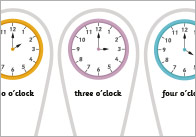Men in childcare: the need for positive male role-models
The recent Jimmy Saville police case has really caused the issue of child abuse to be pushed into centre stage again, and rightly so. But this ‘trial by media’ approach has incited a moral panic in which everyone is guilty and is creating the impression that men shouldn’t be trusted with children at all. This is potentially very damaging as it could deter men even further from working in childcare.
The importance of male role models in early years settings
The London Early Years Foundation (LEYF) recently carried out an extensive study entitled “Men in Childcare: Does it matter to children?”, in an aim to discuss the impact of having a more balanced workforce. The study asked a variety of questions, including why we should encourage men into childcare in the first place and what kind of impact this could have on the children in their care. Here are a few extracts that I found quite interesting:
“Fagan (Principles for developing male involvement programs in early childhood settings: a personal experience, 1996), …[contends] that men bring more play, active movement, entertainment, and rough and tumble play to the way they interact…with children. They asserted that men encourage children to take more risks, enabling more physical, outdoor, ‘rough and tumble’ play because of their physical strength. Children may also form their own stereotypes based on the stereotypes they observe in the adults within their environment (Martin, Stereotypes about children with traditional and non-traditional gender roles, 1995).” Page 8 of the LEYF report.
“Unless men provide positive gender-modelling in literacy, boys attending the nursery, particularly those who do not have male reading role-models at home, will continue to see reading and literacy that is done by girls and women…Attention to the role of men supporting children’s literacy, particularly boys, presents exciting opportunities to devise ways to work with fathers to raise awareness of the importance of them reading with their sons and being seen reading for pleasure. This needs to be linked to strategies to develop parent engagement and extend ways of enriching the home learning environment.” Page 25 of the LEYF report.
It has been readily acknowledged by early years practitioners and development theorists alike that it is important for a child’s development to have both strong male and female role models, especially for children from single parent families (this is something backed up by the LEYF research). According to a recent survey reported in the Evening Standard 98% of parents are now in favour of men looking after children aged 3 to 5.
Early years / primary workforce statistics
The reality is that very few men work in the early years / primary sector. A report by the National Daycare Trust published 3 years ago stated that 97.5% of the childcare workforce in the UK is female. Perhaps more surprisingly last year the BBC reported that 1 in 4 primary schools has no male teacher on its staff.
On the upside, in July 2012 the Guardian reported that the number of men training to be teachers had increased by over 50% in the last 4 years, so I suppose we can only hope that this recent spotlight will not deter more men from choosing teaching and childcare as a career path.
Popular Teaching Resources
Stay Up To Date
Sign up for our newsletter and we’ll let you know when we create new early years resources.





